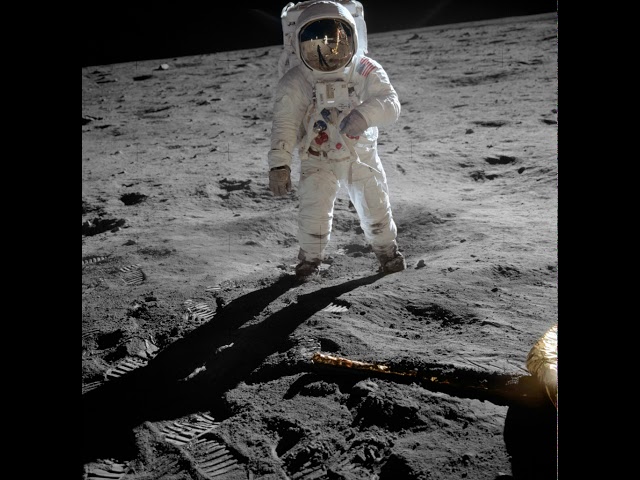This is an audio version of the Wikipedia Article:
https://en.wikipedia.org/wiki/Human_spaceflight
00:02:46 1 History
00:02:55 1.1 Cold War era
00:12:14 1.2 US / Russian cooperation
00:13:46 1.3 China
00:15:28 1.4 Abandoned programs of other nations
00:16:19 1.5 United States post-Space Shuttle gap
00:17:44 1.6 Commercial private spaceflight
00:19:45 2 Milestones
00:19:55 2.1 By achievement
00:22:18 2.2 By nationality or sex
00:24:26 3 Space programs
00:24:51 3.1 Current programs
00:27:24 3.2 Planned future programs
00:29:52 4 Passenger travel via spacecraft
00:31:49 5 National spacefaring attempts
00:32:23 6 Safety concerns
00:32:49 6.1 Environmental hazards
00:33:04 6.1.1 Life support
00:33:22 6.1.2 Medical issues
00:34:48 6.1.2.1 Microgravity
00:36:54 6.1.2.2 Radiation
00:38:42 6.1.2.3 Isolation
00:40:32 6.1.2.4 Sensory systems
00:43:06 6.2 Mechanical hazards
00:43:33 6.2.1 Launch
00:46:24 6.2.2 Reentry and landing
00:47:16 6.2.3 Artificial atmosphere
00:49:48 6.2.4 Reliability
00:52:30 6.3 Fatality risk
00:52:55 7 See also
Listening is a more natural way of learning, when compared to reading. Written language only began at around 3200 BC, but spoken language has existed long ago.
Learning by listening is a great way to:
- increases imagination and understanding
- improves your listening skills
- improves your own spoken accent
- learn while on the move
- reduce eye strain
Now learn the vast amount of general knowledge available on Wikipedia through audio (audio article). You could even learn subconsciously by playing the audio while you are sleeping! If you are planning to listen a lot, you could try using a bone conduction headphone, or a standard speaker instead of an earphone.
Listen on Google Assistant through Extra Audio:
https://assistant.google.com/services/invoke/uid/0000001a130b3f91
Other Wikipedia audio articles at:
https://www.youtube.com/results?search_query=wikipedia+tts
Upload your own Wikipedia articles through:
https://github.com/nodef/wikipedia-tts
Speaking Rate: 0.840212283616557
Voice name: en-GB-Wavenet-A
"I cannot teach anybody anything, I can only make them think."
- Socrates
SUMMARY
=======
Human spaceflight (also referred to as crewed spaceflight or manned spaceflight) is space travel with a crew or passengers aboard the spacecraft. Spacecraft carrying people may be operated directly, by human crew, or it may be either remotely operated from ground stations on Earth or be autonomous, able to carry out a specific mission with no human involvement.
The first human spaceflight was launched by the Soviet Union on 12 April 1961 as a part of the Vostok program, with cosmonaut Yuri Gagarin aboard. Humans have been continuously present in space for 18 years and 195 days on the International Space Station. All human spaceflight has so far been human-piloted, with the first autonomous human-carrying spacecraft under design starting in 2015.
Russia and China have human spaceflight capability with the Soyuz program and Shenzhou program. In the United States, SpaceShipTwo reached the edge of space in 2018; this was the first crewed spaceflight from the USA since the Space Shuttle retired in 2011. Currently, all expeditions to the International Space Station use Soyuz vehicles, which remain attached to the station to allow quick return if needed. The United States is developing commercial crew transportation to facilitate domestic access to ISS and low Earth orbit, as well as the Orion vehicle for beyond-low-Earth-orbit applications.
While spaceflight has typically been a government-directed activity, commercial spaceflight has gradually been taking on a greater role. The first private human spaceflight took place on 21 June 2004, when SpaceShipOne conducted a suborbital flight, and a number of non-governmental companies have been working to develop a space tourism industry. NASA has also played a role to stimulate private spaceflight through programs such as Commercial Orbital Transportation Services (COTS) and Commercial Crew Development (CCDev). With its 2011 budget proposals released in 2010, the Obama administration moved towards a model where commercial companies would supply NASA with transportation services of both people and cargo transport to low Earth orbit. The vehicles used for these services could then serve both NASA and potential commercial customers. Commercial resupply of ISS began two years after the retirement of the Shuttle, and commercial crew launches could begin by 2019.

